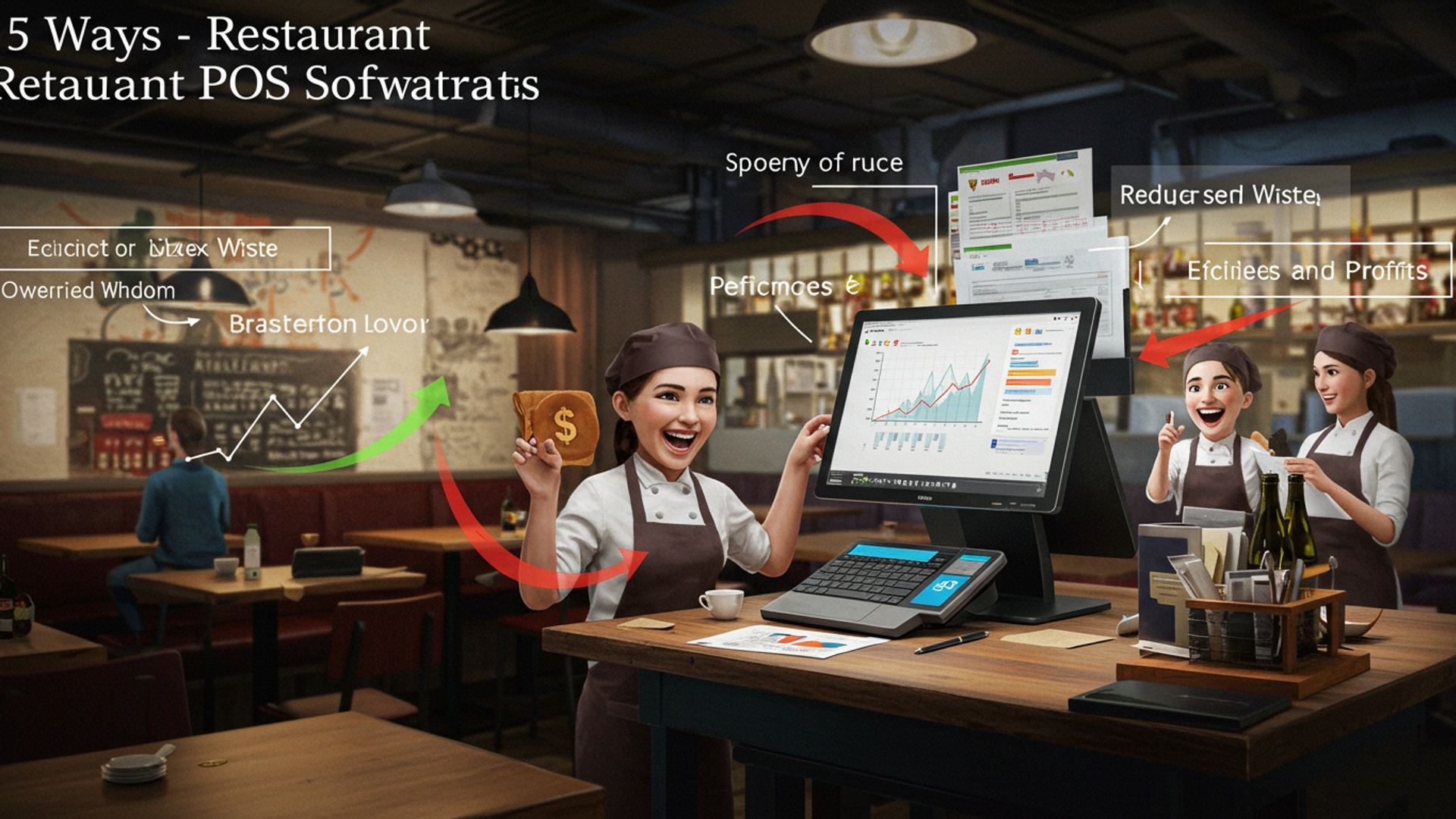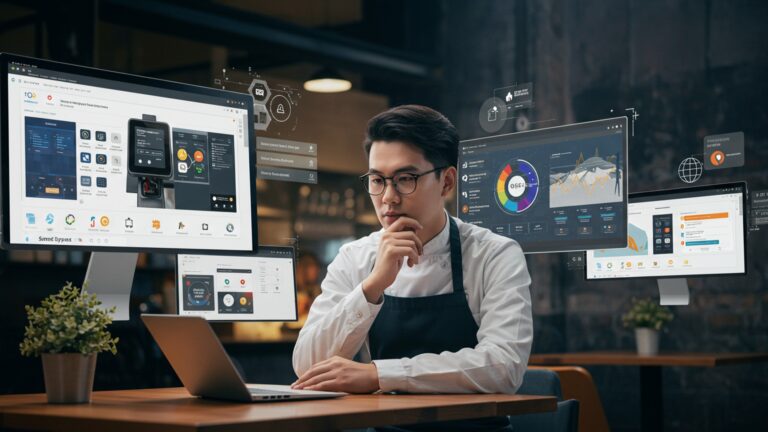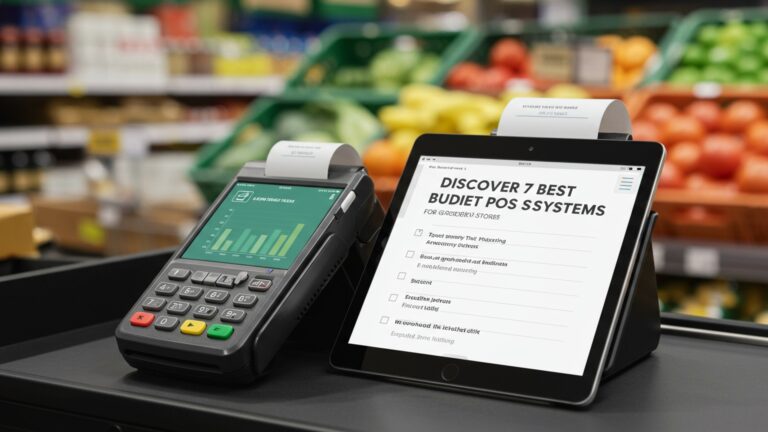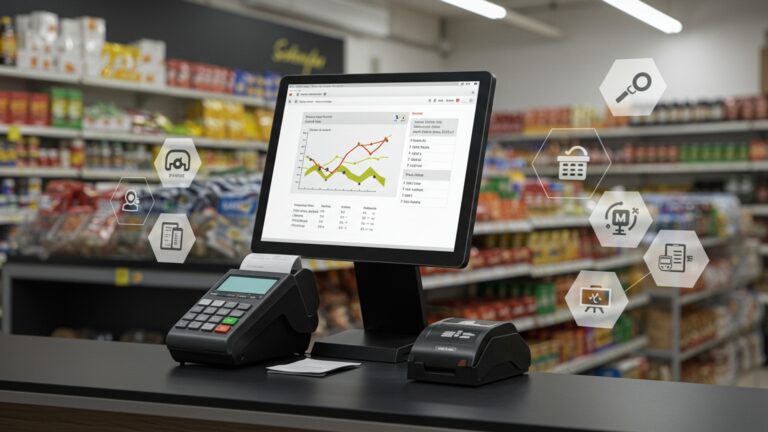5 Ways Restaurant POS Software Boosts Your Business Efficiency and Profits
In today’s dynamic restaurant landscape, characterized by evolving customer demands for seamless digital experiences and the persistent challenge of optimizing operational costs, merely processing transactions falls short. Legacy systems often create critical bottlenecks, from inaccurate inventory leading to waste to inefficient order routing that slows service and impacts table turnover. Modern restaurant POS software transcends basic point-of-sale functionality, acting as a sophisticated central nervous system that integrates everything from tableside ordering and kitchen display systems to real-time sales analytics and intricate staff management. This technology, frequently cloud-based and incorporating AI for predictive insights, empowers operators to streamline complex workflows, reduce overheads. enhance the overall guest journey, turning operational data into actionable strategies for robust profitability.

1. Streamlined Order Management and Accuracy
One of the most immediate and impactful benefits of integrating a robust Restaurant POS software into your operations is the radical transformation of order management. Gone are the days of handwritten tickets that can be misread, lost, or misinterpreted, leading to frustrating errors and delays. Modern Restaurant POS software digitizes the entire ordering process, from the moment a customer places their request to the kitchen’s preparation and beyond.
When a server takes an order using a tablet or a stationary terminal equipped with Restaurant POS software, the data is instantly and accurately relayed. This system often integrates with a Kitchen Display System (KDS), where orders appear on screens in the kitchen or bar, categorized and prioritized. This eliminates the need for physical tickets, reducing waste and the potential for human error. For instance, a busy restaurant during a Friday dinner rush can see a significant reduction in wrong orders and food waste simply by ensuring every order is clearly communicated digitally. This precision not only saves the business money but also enhances customer satisfaction by delivering exactly what was ordered, every time.
- Digital Menu Integration: Menus are loaded directly into the POS, allowing for easy updates, modifier selections (e. g. , “no onions,” “extra cheese”). clear pricing.
- Real-time Communication: Orders are transmitted to the kitchen or bar instantly, minimizing delays between order placement and preparation.
- Table Management: Servers can easily manage table statuses (open, seated, waiting for food, paid), split checks. transfer orders between tables or servers with a few taps.
Consider a scenario where a large party needs separate checks. With a traditional system, this could be a time-consuming and error-prone process. But, Restaurant POS software allows servers to easily split checks by item, seat number, or custom amounts, significantly speeding up service and improving accuracy, thereby enhancing the overall dining experience.
2. Enhanced Customer Experience and Loyalty
Beyond operational efficiency, sophisticated Restaurant POS software plays a pivotal role in cultivating a superior customer experience and fostering long-term loyalty. In today’s competitive dining landscape, speed, personalization. convenience are paramount. A modern POS system empowers restaurants to deliver on all fronts.
Faster service is a direct outcome of streamlined order processing. Customers appreciate quick turnaround times, especially during peak hours. The ability to process payments quickly and securely, including various payment methods like contactless, mobile payments. EMV chip cards, adds another layer of convenience. Moreover, advanced Restaurant POS software can store customer preferences and order history. Imagine a regular customer whose usual drink order or dietary restriction is automatically flagged when their server accesses their profile – this level of personalized service makes customers feel valued and understood.
Many Restaurant POS software solutions also come with integrated loyalty programs. These programs allow businesses to track customer visits, spending. reward them with points, discounts, or exclusive offers. For example, a coffee shop using a POS system can automatically apply a “buy 10, get 1 free” loyalty reward or send a personalized birthday discount via email to a loyal customer. This not only encourages repeat business but also provides valuable data for targeted marketing efforts. The table below illustrates a clear comparison:
| Feature | Traditional Cash Register | Modern Restaurant POS Software |
|---|---|---|
| Order Speed | Slower, manual entry | Fast, digital input, instant kitchen relay |
| Payment Options | Limited (cash, basic card reader) | Multiple (cash, EMV, contactless, mobile, online) |
| Customer Personalization | Manual, relies on server memory | Automated, stores preferences & history |
| Loyalty Programs | Separate, often manual tracking | Integrated, automated points & rewards |
| Error Reduction | High potential for manual errors | Significantly lower due to digitization |
This holistic approach to customer interaction, driven by intelligent Restaurant POS software, transforms casual diners into loyal patrons, ensuring a steady stream of business.
3. Optimized Inventory Control and Waste Reduction
Food and beverage costs typically represent a significant portion of a restaurant’s expenses. Inefficient inventory management can lead to excessive waste, stockouts, or overstocking, all of which eat into profit margins. This is where the robust inventory management capabilities of Restaurant POS software become indispensable. It acts as the brain of your back-of-house operations, meticulously tracking every ingredient from delivery to dish.
A sophisticated Restaurant POS software system can link menu items directly to their component ingredients. When a dish is sold, the corresponding ingredients are automatically deducted from inventory. This real-time tracking provides an accurate picture of what’s in stock, eliminating the need for tedious manual counts and significantly reducing human error. Consider a pizzeria: the moment a “Large Pepperoni Pizza” is sold, the system deducts amounts for dough, sauce, cheese. pepperoni. This level of detail allows owners to pinpoint exactly how much of each ingredient is consumed daily, weekly, or monthly.
- Recipe Management: Define precise ingredient quantities for each menu item, ensuring consistency and accurate cost tracking.
- Automatic Depletion: Ingredients are automatically deducted from stock as dishes are sold, providing real-time inventory levels.
- Vendor Management: Track supplier data, order histories. integrate with purchasing systems for automated reordering.
- Waste Tracking: Log spoiled items, dropped food, or over-prepped ingredients to identify problem areas and train staff.
Many systems also feature low-stock alerts, notifying management when certain ingredients are running low, preventing costly stockouts during peak service. Conversely, by analyzing sales data, the POS can help identify slow-moving items, preventing over-ordering and subsequent spoilage. For example, a restaurant owner might notice, through their POS reports, that a particular seasonal vegetable consistently goes bad before being fully utilized. This insight empowers them to adjust future purchasing, saving money and reducing environmental impact. This meticulous tracking and analysis are crucial for maintaining healthy food costs and maximizing profitability in the long run.
4. Data-Driven Decision Making and Business Intelligence
In the modern business world, data is king. the restaurant industry is no exception. Restaurant POS software is a goldmine of operational data, offering unparalleled insights that empower owners and managers to make informed, strategic decisions. Far beyond just processing transactions, a good POS system captures every facet of your business operations, transforming raw data into actionable business intelligence.
Think about the volume of data generated in a single day: every order, every payment, every staff clock-in, every inventory adjustment. Without a POS, this data is siloed and difficult to examine. But, Restaurant POS software aggregates this data into comprehensive reports and intuitive dashboards. You can easily pull reports on sales performance (daily, weekly, monthly, yearly), peak operating hours, best-selling and least-selling menu items, average check sizes. even individual server performance. This level of detail helps pinpoint areas of strength and weakness.
For instance, by analyzing sales data, a restaurant might discover that their lunch service on Tuesdays is consistently slow, prompting them to introduce a special lunch deal or adjust staffing during that period. Conversely, they might identify that a specific dessert item is a consistent top-seller, leading them to promote it more heavily or even develop new variations. This data also becomes invaluable for menu engineering – optimizing menu items based on profitability and popularity – ensuring that every dish contributes positively to the bottom line.
// Example of a simplified sales report query in a hypothetical POS system
SELECT DATE(transaction_time) AS sales_date, SUM(total_amount) AS total_daily_sales, COUNT(DISTINCT transaction_id) AS total_orders, AVG(total_amount / num_items) AS average_item_price
FROM sales_transactions
WHERE transaction_time >= '2023-01-01' AND transaction_time < '2023-02-01'
GROUP BY sales_date
ORDER BY sales_date ASC;
This query provides a basic snapshot of daily sales. advanced Restaurant POS software offers much more sophisticated analytics, including comparisons across time periods, profit margins per dish. customer spending habits. Leveraging these insights is critical for refining operations, optimizing marketing strategies. ultimately driving sustainable growth.
5. Improved Staff Management and Productivity
Managing staff effectively is crucial for any restaurant’s success. Restaurant POS software offers a suite of tools designed to enhance staff management and boost overall productivity. From scheduling to time tracking and performance monitoring, a well-implemented POS system can significantly reduce administrative burdens and foster a more efficient workforce.
Most Restaurant POS software includes integrated time clock functionality. Employees can clock in and out directly from a terminal, accurately recording their hours worked. This eliminates the need for manual time sheets, reduces payroll errors. ensures compliance with labor laws. Managers can easily access real-time attendance data and generate payroll reports, saving valuable time that would otherwise be spent on tedious administrative tasks. Moreover, many systems offer advanced scheduling features, allowing managers to create and distribute schedules, manage shift swaps. forecast staffing needs based on historical sales data, ensuring optimal coverage during peak and off-peak hours.
- Accurate Time Tracking: Digital clock-in/out ensures precise payroll and reduces time theft.
- Streamlined Scheduling: Create, manage. distribute staff schedules efficiently, often with employee self-service options.
- Performance Monitoring: Track individual server sales, average check sizes. tip distribution, providing data for coaching and incentives.
- Role-Based Permissions: Assign different access levels to staff members (e. g. , manager, server, bartender) to maintain security and control.
For example, a restaurant manager can quickly identify which servers consistently have the highest average check size or best upsell rates, enabling them to recognize top performers and provide targeted training to others. The ability to track tips accurately and distribute them fairly through the system also contributes to staff satisfaction and reduces potential disputes. By automating many of the routine tasks associated with staff management, Restaurant POS software frees up managers to focus on coaching, customer service. strategic planning, ultimately leading to a more engaged and productive team and a smoother running operation.
Conclusion
Embracing restaurant POS software isn’t merely an upgrade; it’s a strategic imperative for today’s dynamic culinary landscape. We’ve explored how a robust system transforms operational bottlenecks into streamlined processes, from precise inventory management, helping you track expensive ingredients like saffron in real-time, to generating invaluable sales analytics that inform smarter business decisions. My personal tip is to not just install a system. to actively explore and master its full capabilities, especially its integration with current trends like contactless payments and online ordering platforms, which are crucial for enhancing both efficiency and customer satisfaction. Having witnessed numerous establishments transition, I can confidently say that the real power lies in leveraging data to predict demand and optimize staffing, thereby directly impacting your bottom line. Don’t let your investment sit idle; empower your team and yourself with the tools to reduce waste, boost service speed. ultimately, cultivate a more profitable and resilient business. The future of your restaurant’s success hinges on your ability to harness this technology.
More Articles
How to Choose the Right Restaurant POS System 5 Key Steps
7 Essential Features Your Restaurant POS Software Must Have for Success
10 Smart Strategies to Maximize Profit with Your Restaurant POS System
Learn 8 Common Mistakes Restaurants Make with POS Software and How to Avoid Them
5 Ways Restaurant POS Software Improves Customer Service and Guest Experience
FAQs
How does a POS system actually make my restaurant run smoother?
A good POS system streamlines everything from taking orders at the table or counter to sending them directly to the kitchen. This means faster service, fewer mistakes with orders. less running around for your staff, creating a much more efficient workflow overall.
Can a POS really help me make more money?
Absolutely! By improving order accuracy and speed, you can serve more customers. Plus, features like inventory management help reduce food waste and optimize purchasing, cutting down on costs. Better data insights also let you identify your most profitable menu items and upsell opportunities.
Is it true a POS can help me track my food stock?
Yes, it’s one of its biggest advantages! A modern POS tracks ingredients in real-time as dishes are sold. This helps you know exactly what you have, when to reorder. even identifies potential waste or theft, saving you a lot of money and ensuring you never run out of popular items.
What about keeping my customers happy? Does a POS help with that?
Definitely. Faster, accurate orders mean happier customers. Many POS systems also support loyalty programs, allowing you to reward repeat business and offer personalized promotions. This makes customers feel valued and encourages them to come back more often.
I’m not great with numbers. Will a POS give me useful insights without being too complicated?
Yes, most modern POS systems are designed with easy-to-interpret reporting features. They can show you sales trends, peak hours, which menu items are selling best (and which aren’t). even staff performance, all presented in clear, actionable reports without needing to be a data expert.
How does a POS system help my staff work better?
It empowers them! Staff can take orders quickly and accurately with just a few taps, easily split checks, manage tables. process payments right at the table. This reduces errors, speeds up service. lets your team focus more on providing excellent customer service rather than getting bogged down in manual tasks.
Is getting a POS system a big hassle, or will I see the benefits quickly?
While there’s an initial setup, the benefits usually kick in pretty fast. You’ll quickly notice improved order accuracy, faster service, better inventory control. clearer financial insights. Many businesses find the increased efficiency and cost savings lead to a significant return on investment in a relatively short time.





